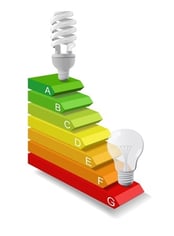

J&C Blog
Find all the latest marketing trends on the J&C Blog.

Find all the latest marketing trends on the J&C Blog.

Energy efficiency and energy management are focal points of many utility marketing efforts. Customers are often surprised to learn that their utility company wants them to use its product less. Seems pretty counterintuitive at first. Beyond savings for customers, energy efficiency efforts have a number of additional benefits, including environmental and managing system load.

While most residential and small business customers can benefit from adopting energy efficiency and energy management efforts, a number of factors often stand in the way. Adoption of energy management behavior doesn’t come naturally to customers, and often investment is required. Adoption is often influenced by rebates and incentives offered by utilities. Educating customers is key to overcoming inherent barriers in driving energy efficiency marketing efforts.
What keeps customers from wanting to improve their energy efficiency?
Ask people on the street if they want to help the environment and save money, and they’ll instantly say “yes.” Try to put ideas into practice as part of a utility marketing campaign, and it’s a whole different story. It might be true for large-scale commercial and industrial clients that their systems simply can’t be adapted to a higher level of energy efficiency without completely changing the way they do business. This type of large-scale effort often translates directly to investment and up-front commitment of financial resources.
For the vast majority of customers adopting energy management efforts can provide a positive investment. However, a few mental hurdles need to be cleared for customers to accept what is required to drive adoption of energy efficiency measures.
The biggest is overcoming the value relationship. For some, the offset of energy savings might not seem worth the time and dollar investment. Energy efficiency means making improvements, and often these types of changes are perceived as being expensive, or at a minimum a higher cost than what is currently being done. Some customers simply may not have enough cash flow to make an improvement, while others may have the ability but don’t understand how to determine if it will be a wise investment.
Once the “value equation” hurdle is cleared, there’s still a problem of time. Most energy efficiency projects have a number of steps, many of which the average person is unfamiliar with how to execute. This is where content marketing comes into play.
Content marketing for utilities is how you get customers over these hurdles.
The simple answer is education through content marketing for utilities. Customers need to see what’s in it for them. Rather than just telling customers that improving energy efficiency is a wise investment, use content marketing to explain the types of changes that can be made to a home or business, and what is involved. Content marketing can be used to demystify energy efficiency measures and make measures more accessible. This level of education can make energy efficiency very tangible and digestible for varying segments.
How you go about this is key to a successful content marketing campaign for a utility. When done correctly, content marketing can be an effective technique to drive search engine optimization. Rather than just promoting available incentives, content marketing targets solving a customer’s problems. For example, a content marketing program we’re running for PG&E highlights content such as what it will cost businesses to upgrade their HVAC system or helping businesses learn about some easy ways to cut their lighting expenses.
The goal of content marketing is to utilize content to intercept users when they are searching for energy-related topics and then move these customers into a communications funnel. The funnel of communications helps support the many decisions required to adopt an energy efficiency measure. Many energy efficiency measures, especially on the small and medium-size commercial side, require a multi-step process to consider, evaluate and execute.
For example, if users are searching for a new piece of equipment, content marketing can be there to help influence their choice, with the end point recommending a rebate, incentive or other energy efficiency product/measure. Once users are intercepted they are driven to an article that answers some of their questions. From the article they are driven to a landing page and encouraged to provide their contact information to download a more robust document, such as an ebook, guide or infographic. Users who engage in a download are followed up with targeted emails that highlight specific rebates, incentives and any other information necessary to get customers over the final hurdles. This front-to-end content marketing strategy can support energy efficiency, grow adoption and ultimately create a group of customers most likely to implement measures.
Many utilities are exploring new ways to support their energy efficiency programs. A strong content marketing strategy for utilities can overcome barriers to energy efficiency. To learn how your company can build a cohesive, energy efficiency content marketing strategy, set up a time to get our personalized assessment and recommendations for your utility.
Topics: Utility Industry
303 E Wacker Drive, Suite 2030
Chicago, IL 60601
Phone: 312-894-3000
Fax: 312-894-3005